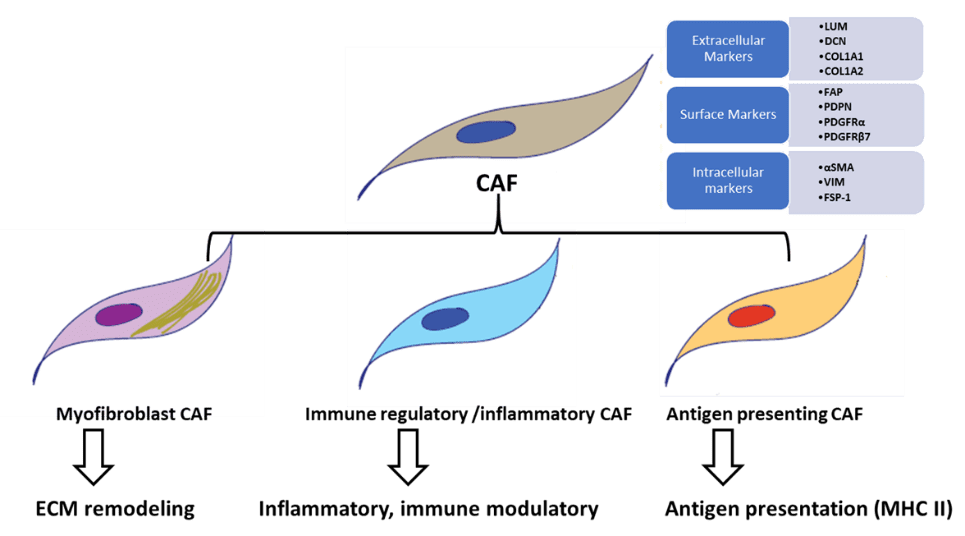


Preclinical investigations to support your drugs targeting Cancer-Associated Fibroblast (CAFs) development
Cancer-associated fibroblast (CAFs) play key roles in cancer disease progression and metastasis development. In cancer, a better understanding of the complex nature of cancer-associated fibroblasts (CAFs) could help improve precision cancer therapeutics and patient outcomes.
Cancer-associated fibroblasts (CAFs) could have prognostic and therapeutic value. CAF population is associated with each particular cancer subtype and secrete growth factors, inflammatory ligands, and extracellular matrix (ECM) proteins that promote tumor proliferation, therapy resistance, and immune exclusion.


CAFs Subpopulation can be grouped into 3 main classes through several tumor types based on expression of certain markers.
The three CAF subsets described in human tumors are also found in murine pancreatic cancer models by scRNAseq analysis. Several methods for targeting CAFs to inhibit tumor progression and enhance anti-tumor immunity have recently been reported including:
- CAFs depletion through CAR T cell, vaccination, oncolytic adenovirus and monoclonal antibody.
- Normalization of CAFs phonotype by targeting vitamin A and D receptors.
- Targeting downstream effectors of CAFs through CAF-derived chemokines, cytokine, ECM proteins and others factors.
How Oncodesign Services can support your drugs screening and efficacy targeting CAF
Different Models can be used by Oncodesign Services to study cancer-associated fibroblast (CAF) biology.

Oncodesign Services can characterize functional plasticity of CAFs in the tumor microenvironment by using broad range of technologies
- To identify the functional role of CAFs in tumor development and in the response to anti-tumor treatment.
- To Identify by flow cytometry of different CAF subsets from tumors.
- To identify surface and intracellular protein markers by transcripts and Immunofluorescence to determine the spatial distribution of CAF subtype localization in the TME.
- Use scRNA sequencing to identify a novel CAF subtypes through high resolution characterization of whole transcriptomes on a single cell level.

Analytic platform for CAFs
Case study:
Anti-cancer Drugs treatment increase the expression of αSMA a CAF marker in PDX prostate tumor model resistant to castration
- The same level of α-SMA expression was observed by both methods’ quantification IHC and Immunofluorescence analysis

- Analysis of the genes expression in the mouse microenvironment shows that G2 and G4 treated with compound A and compound A+B respectively display less endothelial cells and vessels, but more eosinophils and monocytes/macrophages.


Contact us about your project

